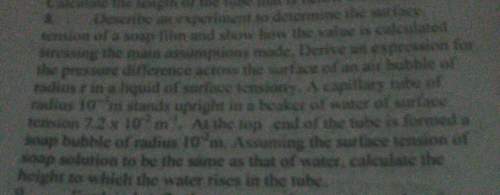
Consider a disk with the following characteristics (these are not parameters of any particular disk unit): block size b = 512 bytes; interblock gap size g = 128 bytes; number of blocks per track = 20; number of tracks per surface = 400. a disk pack consists of 15 double-sided disks. a. what is the total capacity of a track, and what is its useful capacity (excluding interblock gaps)? b. how many cylinders are there? c. what are the total capacity and the useful capacity of a cylinder? d. what are the total capacity and the useful capacity of a disk pack? e. suppose that the disk drive rotates the disk pack at a speed of 2400 rpm(revolutions per minute); what are the transfer rate (tr) in bytes/msec and the block transfer time (btt) in msec? what is the average rotational delay (rd) in msec? what is the bulk transfer rate? f. suppose that the average seek time is 30 msec. how much time does it take (on the average) in msec to locate and transfer a single block, given its block address? g. calculate the average time it would take to transfer 20 random blocks and compare it with the time it would take to transfer 20 consecutive blocks using double buffering to save seek time and rotational delay of 17.28

Answers: 1


Another question on Physics

Physics, 22.06.2019 02:00
The image shows a pendulum in simple harmonic motion the pendulum starts at a and swing to e
Answers: 1

Physics, 22.06.2019 03:00
Arotating space station is said to create “artificial gravity”—a loosely-defined term used for an acceleration that would be crudely similar to gravity. the outer wall of the rotating space station would become a floor for the astronauts, and centripetal acceleration supplied by the floor would allow astronauts to exercise and maintain muscle and bone strength more naturally than in non-rotating space environments. if the space station is 200 m in diameter, what angular velocity would produce an “artificial gravity” of 9.80 m/s^{2} 2 at the rim?
Answers: 3

Physics, 22.06.2019 06:00
Suppose water is leaking from a tank through a circular hole of area ah at its bottom. when water leaks through a hole, friction and contraction of the stream near the hole reduce the volume of water leaving the tank per second to cah 2gh , where c (0 < c < 1) is an empirical constant. a tank in the form of a right-circular cone standing on end, vertex down, is leaking water through a circular hole in its bottom. (assume the removed apex of the cone is of negligible height and volume.) (a) suppose the tank is 20 feet high and has radius 8 feet and the circular hole has radius 2 inches. the differential equation governing the height h in feet of water leaking from a tank after t seconds is dh dt = − 5 6h3/2 . if the height of the water is initially 8 feet, how long will it take the tank to empty? (round your answer to two decimal places.)
Answers: 2

Physics, 22.06.2019 14:20
4r-134a enters the condenser of a residential heat pump at 800 kpa and 50°c at a rate of 0.022 kg/s and leaves at 750 kpa subcooled by 3°c. the refrigerant enters the compressor at 200 kpa superheated by 4°c determine (a) the isentropic efficiency of the compressor, (b) the rate of heat supplied to the heated room, and (c) the cop of the heat pump. also, determine (d) the cop and rate of heat supplied to the heated room if this heat pump operated on the ideal vapor-compression cycle between the pressure limits of 200 and 800 kpa. (0.757, 4.37 kw, 5.12, 6.18, 3.91 kw)
Answers: 3
You know the right answer?
Consider a disk with the following characteristics (these are not parameters of any particular disk...
Questions



Mathematics, 10.10.2019 01:30

Physics, 10.10.2019 01:30

English, 10.10.2019 01:30



World Languages, 10.10.2019 01:30

Mathematics, 10.10.2019 01:30


Social Studies, 10.10.2019 01:30

History, 10.10.2019 01:30

History, 10.10.2019 01:30


Mathematics, 10.10.2019 01:30


Mathematics, 10.10.2019 01:30


Biology, 10.10.2019 01:30




